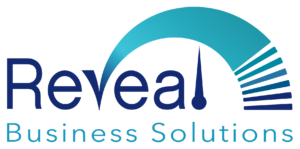Business Budgeting in Six Simple Steps
By: Valerie Briley, CPA, Founder, and Chief Business Driver, Reveal Business Solutions
We’ve been talking about being in and preparing for a recession. Budgeting is another excellent tool to keep spending in check and trigger you to adjust if you aren’t meeting revenue targets. As we roll into 2023, now is a great time to establish a budget to drive your business intentionally in the new year.
A budget is a plan; it’s almost always off, but having a budget gives you something to measure against to understand what to adjust. There are several different types of budgets; today, we will focus on how to prepare an operational budget.
Creating a budget requires an evaluation of your goals and an understanding of your current environment. We’ll show you how these components come into play as you work through preparing a budget.
Step 1: Budget your income
Your income statement from 2022 is a great place to start. What income is recurring that you can plan on? How many new projects or sales do you plan to make in 2023, and in what months? Clarifying your income targets will help you break down the actions you need to take each month to meet those sales goals.
Step 2: Determine the cost of sales, both fixed and variable
Cost of sales is the direct costs associated with earning revenue (i.e., payroll for persons delivering your service or product, sales commissions, subscriptions, or tools needed to deliver your services).
Fixed costs are those you incur regardless of revenue, such as a salaried employee or a subscription.
Variable costs are costs you incur when you deliver your product or service, such as a contractor or the materials or costs to make the product you sell.
Your income statement from 2022 will help you identify your cost of sales and the types of expenses that are fixed versus variable. Understand your goals for 2023 in estimating your expenses for each month, as some may be dependent on your sales goal. Consider if you will make any adjustments to existing vendor agreements or hire additional employees.
Step 3: Determine your overhead expenses
Overhead expenses are your non-client specific costs required to operate your business, like your accountant, business coach, virtual assistant, answering service, business insurance, rent, some types of software, etc. Again, you will have fixed and variable overhead expenses. If the expense is constant, then it is a fixed expense. If it is dependent on usage, then it is a variable expense.
Step 4: Identify One-Time Business Investments
Most of your expenses will be predictable cost of sales or overhead expenses. If you have plans or goals for business investments, such as purchasing a new laptop, a conference, or a consultant, plan for those expenses, but add them to your budget in the months you intend to incur them.
Step 5: Pull It Together
We love Excel for preparing a budget because you can add notes and supporting schedules for the assumptions and details of what is included in each budgeted line item.
Step 6: Enter it into QBO
Enter your budget in QuickBooks Online so we can include a budget-to-actual report in your monthly management report. This will help you make data-driven financial decisions timely. Course correcting in real-time will help you stay on track.
If you have questions or need help preparing your business budget for 2023, contact us at Reveal Business Solutions. We can help you make sense of your business data, so you can create a meaningful budget to guide you successfully in 2023.
